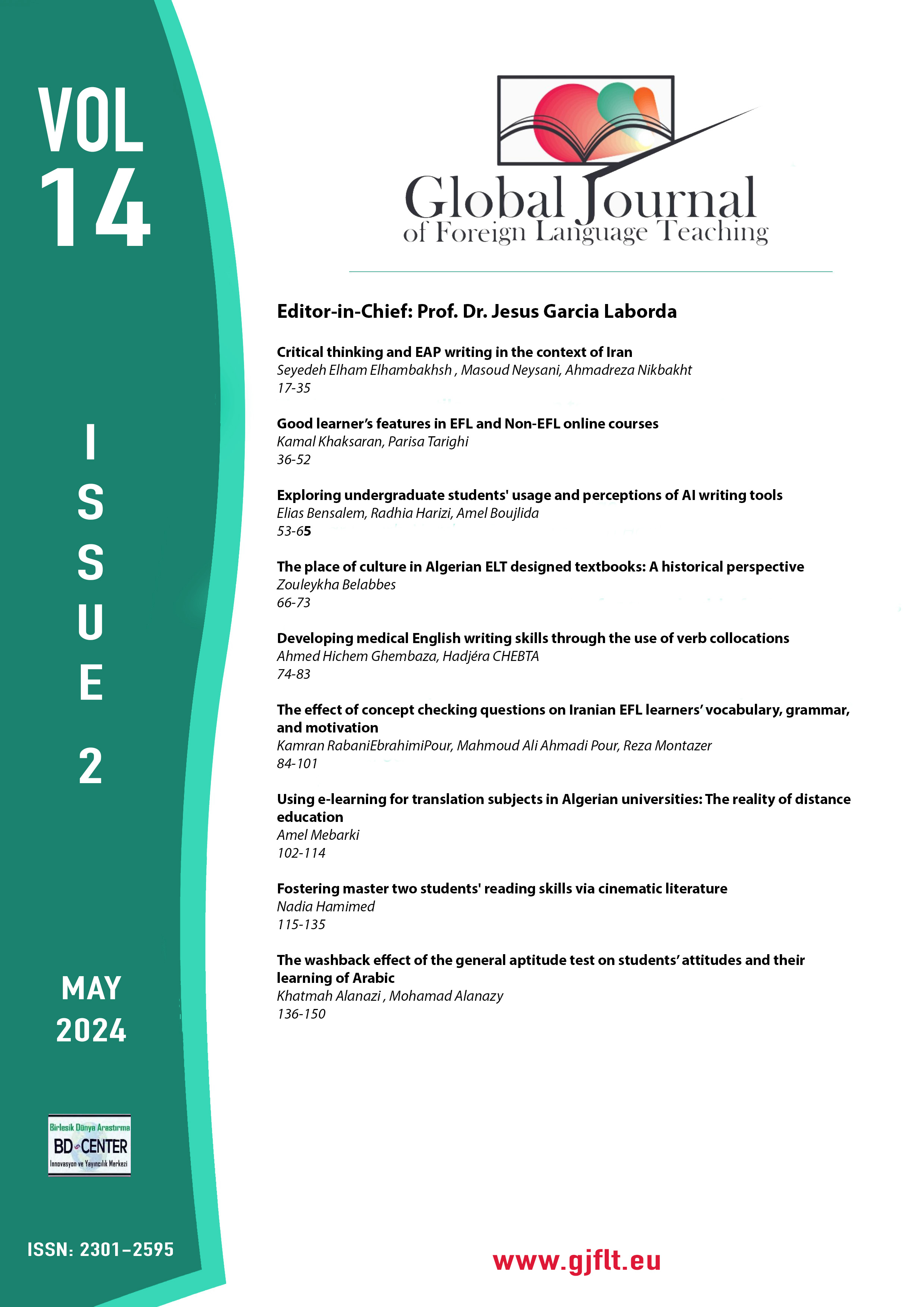Critical thinking and EAP writing in the context of Iran
Main Article Content
Abstract
Some of the fundamental abilities that universities want their students to cultivate throughout their degree programs include critical thinking. By undertaking a meta-synthesis of prior empirical research, this study aims to comprehend how EAP students and teachers interpret critical thinking and which instructional approaches seem to be most successful in teaching both writing and critical thinking. The analysis of nine articles was done by using an operational method to teach critical thinking. The findings indicate that many students in the study continue to have misconceptions about what critical thinking is, and because of these misconceptions or cultural differences, they might be perceived as lacking the will to think critically. Evaluation and synthesis abilities are emphasized in writing teaching because they are seen to be directly related to critical thinking. The data also suggests that persistent cooperative learning could be advantageous to effectively educate critical thinking and writing.
Keywords: Argument; critical thinking; EFL Learners; English language teaching; writing.
Downloads
Article Details

This work is licensed under a Creative Commons Attribution-NonCommercial-NoDerivatives 4.0 International License.
Authors who publish with this journal agree to the following terms:- Authors retain copyright and grant the journal right of first publication with the work simultaneously licensed under a Creative Commons Attribution License that allows others to share the work with an acknowledgement of the work's authorship and initial publication in this journal.
- Authors are able to enter into separate, additional contractual arrangements for the non-exclusive distribution of the journal's published version of the work (e.g., post it to an institutional repository or publish it in a book), with an acknowledgement of its initial publication in this journal.
- Authors are permitted and encouraged to post their work online (e.g., in institutional repositories or on their website) prior to and during the submission process, as it can lead to productive exchanges, as well as earlier and greater citation of published work (SeeThe Effect of Open Access).
